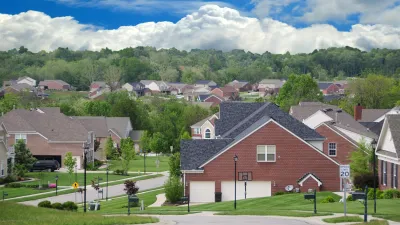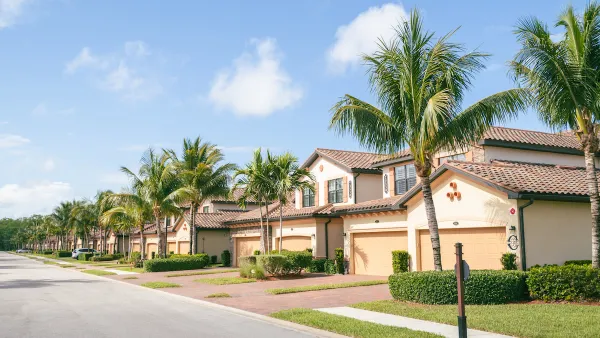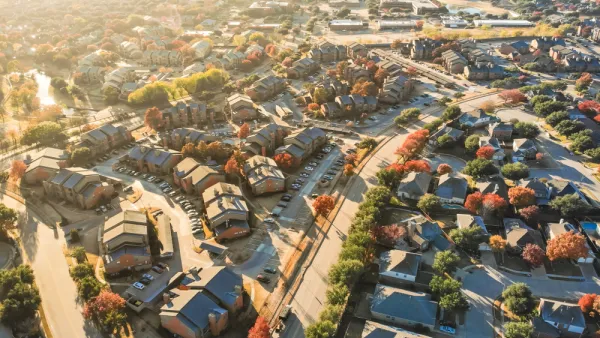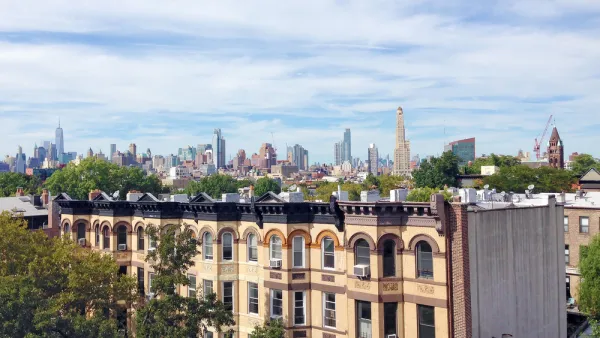In the last three decades HOAs have grown six-fold in the U.S. They now cover 20 percent of American homes, and stifle sustainability and expression through “one of the most significant privatizations of local government functions in history.”

Kaid Benfield unleashes his wrath on America's 323,600 homeowner associations, which "preside over the homes and neighborhoods of an astounding 63.4 million Americans." He details the ways in which such "governing associations" use their powers to stifle expression and sustainable practices, such as planting produce gardens, air-drying clothes, and installing solar panels.
"I use the word “governing” deliberately, because that is very much what HOAs do (and what my condo board did, when I lived in Adams-Morgan)," writes Benfield. "For example, they have taxing power, setting mandatory dues that if not paid can result in the placement of a lien on your property or even foreclosure; they have regulatory authority, setting rules for everything from when you can take out the trash to what color and materials you use in your window treatments to what you can and cannot grow in your yard. They have enforcement power, too, including the right to issue cease and desist orders and to impose financial penalties in the form of fines. One legal observer has called the exercise of quasi-political powers by HOAs 'one of the most significant privatizations of local government functions in history,' pointing out how quickly some of them move to foreclose on private homes because of dues underpayment."
"In a lot of places – probably in most – it’s a sort of government-among-friends, where rules are applied and interpreted with good faith and generosity, where neighbors cooperate on upkeep, and where buildings and communities look better and function better because of it."
"But, in others, homeowners’ associations appear to have more in common with the Soviets than just a communal process."
FULL STORY: Coercion by contract: how homeowners associations stifle expression, sustainability

Analysis: Cybertruck Fatality Rate Far Exceeds That of Ford Pinto
The Tesla Cybertruck was recalled seven times last year.

National Parks Layoffs Will Cause Communities to Lose Billions
Thousands of essential park workers were laid off this week, just before the busy spring break season.

Retro-silient?: America’s First “Eco-burb,” The Woodlands Turns 50
A master-planned community north of Houston offers lessons on green infrastructure and resilient design, but falls short of its founder’s lofty affordability and walkability goals.

Test News Post 1
This is a summary

Analysis: Cybertruck Fatality Rate Far Exceeds That of Ford Pinto
The Tesla Cybertruck was recalled seven times last year.

Test News Headline 46
Test for the image on the front page.
Urban Design for Planners 1: Software Tools
This six-course series explores essential urban design concepts using open source software and equips planners with the tools they need to participate fully in the urban design process.
Planning for Universal Design
Learn the tools for implementing Universal Design in planning regulations.
EMC Planning Group, Inc.
Planetizen
Planetizen
Mpact (formerly Rail~Volution)
Great Falls Development Authority, Inc.
HUDs Office of Policy Development and Research
NYU Wagner Graduate School of Public Service




























